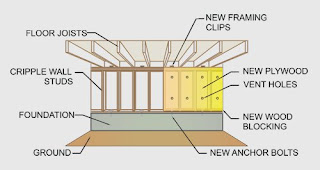If you're in the market to buy a home, your down payment is likely top of mind. And no doubt you've heard the rule of thumb that you shouldn't buy a home unless you can put 20% down. Before accepting this myth, it's important to do your homework, weigh the pros and cons regarding your down payment options and get the facts, such as:
- A growing number of borrowers are putting down between 5 and 10%.
- Today, you can put down as little as 3% through mortgage options like the Freddie Mac Home Possible AdvantageSM mortgage.
It's a fact that the more you put down, the lower your monthly mortgage payment will be and the less you'll owe the bank. It's also a fact that homebuyers who put at least 20% down don't have to pay Primary Mortgage Insurance (PMI), an added insurance policy that protects the lender if you are unable to pay your mortgage. However, if putting 20% down is not an option or will deplete all of your savings and leave you with no financial cushion, it's probably not in your best interest.
While you'll have to pay PMI for a conventional loan with a down payment of less than 20%, you'll still be able to take advantage of today's low mortgage rates – especially the 30-year fixed rate mortgage that can offer you security and peace of mind throughout the life of your loan.
Plus, once you've built equity of 20% in your home, you can cancel your PMI and remove that expense from your monthly payment.
THE MATH: $200,000 HOME – 5% Down vs. 20% Down
| 5% DOWN PAYMENT | 20% DOWN PAYMENT | |
|---|---|---|
| Down Payment | $10,000 | $40,000 |
| Loan Amount | $190,000 | $160,000 |
| Mortgage Type | 30-year fixed-rate | 30-year fixed-rate |
| Interest Rate | 4.5% | 4.5% |
| Monthly Mortgage Payment (Principal and Interest) | $962.70 | $810.70 |
| PMI | $80.75* | $0 |
| $1,043.45** | $810.70** |
*Assuming an insurance rate of 0.51%; this cost can be cancelled from your payment once you reach 20% equity in your home for conventional loans.
**Does not include property tax and homeowners insurance payments
**Does not include property tax and homeowners insurance payments
Carefully evaluate your finances to determine how much you can afford and talk with your lender or housing professional about down payment options that make best sense for you.












